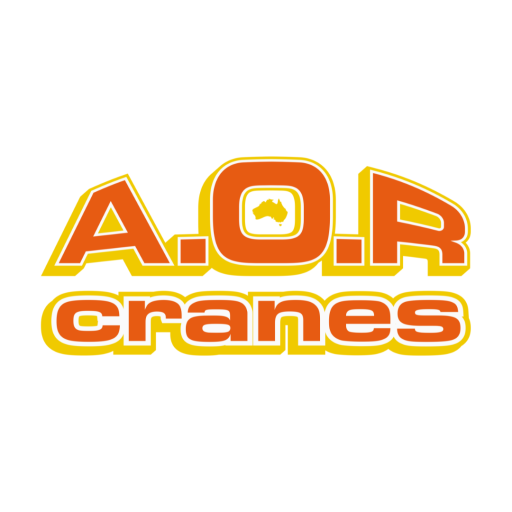
How Weather Conditions Affect Crane Operation and Lifting
While weather is one of the key variables, it’s important to remember that multiple factors influence a crane’s lifting performance, including boom angle, radius, and ground stability. Because crane operations are heavily reliant on the weather, erratic weather patterns can present significant safety hazards as well as operational delays. Whether lifting in high-rise zones or regional infrastructure sites, understanding how weather specifically impacts different crane types is critical to ensuring safety and regulatory compliance.
Weather Conditions & Crane-Specific Effects
Each crane type behaves differently under environmental stress. This section breaks down how six key weather conditions impact cranes used across NSW (New South Wales), along with targeted safety actions.
High Winds
Impact:
Wind introduces dynamic loading, where side gusts cause swinging, instability, or uncontrolled boom movement. Wind speed affects the lifting capacity of cranes with high boom lengths. This becomes especially dangerous during long or high lifts.
- Tower Cranes: Their elevation makes them extremely wind-sensitive. Gusts above 54 km/h (15 m/s) typically require a full stop.
- Mobile Slewing Cranes: Boom sway and sail area increase with height; lifting capacity must be reduced by 50% or more at 40 km/h.
- Franna Cranes: Shorter reach, but still vulnerable when using long boom extensions or lifting with load sail area.
- Crawler Cranes: More stable at base, but vulnerable at full boom height or when lifting large surface-area loads.
Safety Protocols:
- Install anemometers at both crane height and ground level.
- Use manufacturer wind derating charts and load charts to recalculate safe load.
- Implement wind-triggered lift shutdowns using real-time monitoring.
- Conduct toolbox talks on sail area awareness, especially for large panels, frames, or precast concrete lifts.
Heavy Rain & Storms
Impact:
Rain affects surface traction, electrical systems, and visibility, and increases the risk of ground saturation. Storms add lightning and wind risk.
- Franna Cranes: Struggle with traction on wet roads or grass, especially during tight urban lifts.
- Crawler Cranes: While designed for rough terrain, wet clay or sand can bog tracks and compromise base stability.
- All-Terrain Cranes: Better equipped for varied terrain but still require dry, stable pads.
- Tower Cranes: Limited risk from water, but operations must pause during lightning due to elevated structure.
Safety Protocols:
- Conduct site drainage checks before deploying heavy equipment.
- Use anti-slip access paths, bog mats, or steel plates under outriggers.
- Implement a pre-lift lightning assessment during storm forecasts (BOM).
- Provide clear visibility PPE and flashing beacon lights for spotters during reduced visibility periods.
Extreme Heat
Impact:
Prolonged heat affects operator performance, hydraulic fluid viscosity and can cause thermal expansion in structural components.
- Crawler Cranes: Extended cycles in direct sun can overheat hydraulics and cab interiors.
- Tower Cranes: Operators may experience heat exhaustion in glass cabs. Cabin temps can exceed 50°C if unventilated.
- Franna and Mobile Cranes: Engines and electronics may fail without adequate cooling.
Safety Protocols:
- Use reflective insulation inside crane cabins.
- Schedule early morning or night shifts to avoid midday extremes.
- Enforce hydration and rest protocols: 15-min break per hour in 35°C+.
- Monitor hydraulic oil temperatures and apply cooldown periods.
Fog, Smoke, and Low Visibility
Impact:
Crane operations rely heavily on line-of-sight. Fog and bushfire smoke can completely obscure visual cues and signalers.
- Tower Cranes: Signalers and dogmen may be invisible from cab height.
- Franna Cranes: Limited maneuvering space becomes riskier when ground crew can’t be seen clearly.
- All Mobile Cranes: Swing paths, landing spots, and surrounding structures can’t be judged accurately.
Safety Protocols:
- Pause all critical lifts when visibility drops below 100 meters.
- Equip crews with two-way radios and establish verbal/automated signal protocols.
- Deploy high-vis PPE with retroreflective strips and LED signal flags or strobes.
- Establish exclusion zones where visibility is <50% of standard lift distance.
Frost, Ice, and Cold Snaps
Impact:
While rare in NSW lowlands, frost is common in highland and alpine zones. Cold weather affects hydraulics, steel components, and surface friction.
- Crawler Cranes: Hydraulic oil thickens, slowing boom response and risking cavitation.
- Tower Cranes: Ice on cables or booms can lead to jerky movements or failure to hold load tension.
- All Types: Frosted outriggers may slip or misalign on icy pads.
Safety Protocols:
- Conduct early morning frost inspections on metal surfaces and hydraulic lines.
- Use low-temperature-rated oils and lubricants during winter months.
- Apply non-slip pads or rubber mats over frozen concrete or gravel.
- Delay operations until ambient temp exceeds 5°C to allow safe hydraulic activation.
Muddy Ground Conditions
Impact:
Soft or saturated soil reduces ground-bearing capacity and increases the risk of crane tip-over.
- Crawler Cranes: Most at risk of becoming bogged, especially in clay-heavy terrain.
- Franna Cranes: Wheels may sink on grass or dirt access ways.
- All-Terrain Cranes: May appear stable but can shift without proper outrigger pads.
Safety Protocols:
- Conduct soil compaction and bearing pressure tests before lift.
- Use spreader plates, steel mats, or bog mats under all contact points.
- Avoid parking or lifting near trench edges or unreinforced embankments.
- Assign a spotter for outrigger placement and movement checks.
Region-Wise Weather Impact on Crane Operation in NSW
| NSW Region | Common Weather Risks | Cranes Most Affected | Key Precautions |
| Sydney Metro | Gusts, fog, thunderstorms | Tower, slewing cranes | Wind derating, lightning pauses, visibility control |
| Newcastle & Hunter | Coastal winds, heavy rain | Mobile, tower cranes | Rain shutdown protocols, gust monitoring |
| Western Sydney | Heat, muddy soil post-rain | Franna, crawler cranes | Hydration enforcement, bog mat use |
| South Coast | Flooding, unstable ground | All-terrain, Franna | Drainage prep, storm delay planning |
| Snowy Mountains | Frost, cold winds, fog | Tower, crawler cranes | Cold start checks, anti-slip pads |
9 Weather Safety Protocols for Crane Operations
- Check live weather forecasts from reliable sources (e.g., BOM) before each shift.
- Monitor on-site conditions continuously, especially wind speed and visibility.
- Verify ground stability and soil condition before setup, especially after rainfall.
- Confirm crane configuration matches weather tolerance, including load limits and boom angles.
- Suspend operations when any condition exceeds the crane’s manufacturer-rated limits.
- Equip the crew with proper communication tools (e.g., radios, signal systems) for low-visibility environments.
- Conduct pre-start inspections focused on hydraulics, outriggers, and cab conditions relevant to the weather.
- Train all personnel on emergency response and shutdown procedures related to weather hazards.
- Document weather-related decisions in lift plans and daily reports for compliance and risk management.
Plan Lifts with Weather in Mind
Every crane has a weather limit. Ignoring environmental conditions not only compromises safety but can delay projects and violate compliance standards. Whether operating in Sydney’s storm-prone urban zones or on regional NSW construction sites, crane operations must be tailored to local weather risks and supported by structured planning.
Following best practices, such as those aligned with AS 2550.1 and Safe Work NSW guidelines, ensures that both personnel and project timelines are protected.
At AOR Cranes, we bring decades of experience managing crane hire operations across Sydney in various weather conditions. Our team applies rigorous safety protocols, uses manufacturer-approved load derating practices, and monitors real-time weather data to ensure your lift is not just possible but professionally executed.

AOR Cranes is dedicated to delivering top-notch crane hire services with safety, reliability, and expertise at the core. With over 30 years of experience, we handle every project with care and expertise to meet your needs.








